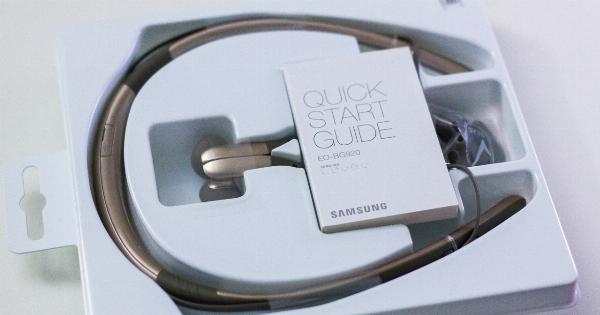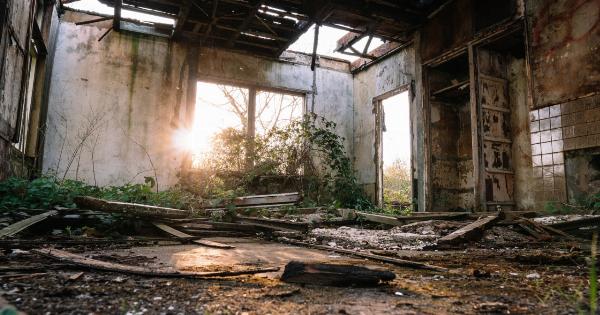The biliary tract is a vital part of the digestive system, responsible for transporting bile from the liver to the small intestine. It plays a crucial role in the digestion and absorption of fats.
However, like any other part of the body, the biliary tract is also prone to certain problems and disorders that can significantly impact its normal functioning. In this article, we will explore some common indications of biliary tract problems and discuss potential solutions.
1. Gallstones
Gallstones are one of the most prevalent biliary tract problems. These are hard deposits that form in the gallbladder, a small organ located under the liver. Gallstones can cause severe pain in the upper abdomen, known as biliary colic.
Other symptoms may include bloating, nausea, and jaundice. In some cases, gallstones can lead to more serious complications, such as inflammation of the gallbladder or blockage of the bile ducts.
2. Cholecystitis
Cholecystitis refers to the inflammation of the gallbladder, usually caused by gallstones blocking the bile ducts. This condition can lead to severe abdominal pain, fever, and jaundice.
If left untreated, cholecystitis can result in complications such as abscess formation or rupture of the gallbladder. Treatment for cholecystitis often involves surgical removal of the gallbladder, known as a cholecystectomy.
3. Biliary Dyskinesia
Biliary dyskinesia is a disorder characterized by abnormal motility of the biliary tract. It can cause symptoms similar to those of gallstones or cholecystitis, such as abdominal pain and bloating.
However, in the case of biliary dyskinesia, imaging tests may not reveal the presence of gallstones or inflammation. Treatment for biliary dyskinesia may involve medication to promote better motility or surgical intervention.
4. Biliary Strictures
Biliary strictures refer to the narrowing of the bile ducts, which can obstruct the flow of bile. Strictures can be caused by various factors, including previous surgeries, inflammation, or trauma.
Symptoms of biliary strictures can include jaundice, itching, and pale stools. Treatment options for biliary strictures include minimally invasive procedures such as balloon dilation or the placement of stents.
5. Biliary Atresia
Biliary atresia is a rare, congenital condition in which the bile ducts are either absent or blocked. This can lead to the accumulation of bile in the liver, causing liver damage. Biliary atresia is typically diagnosed in infancy.
If left untreated, it can result in liver failure. The treatment for biliary atresia often involves surgical reconstruction of the bile ducts.
6. Choledocholithiasis
Choledocholithiasis occurs when gallstones get lodged in the common bile duct, the main pathway for bile flow from the liver to the small intestine. This can cause symptoms similar to those of gallstones, such as abdominal pain and jaundice.
Treatment for choledocholithiasis often involves procedures to remove the stones, such as endoscopic retrograde cholangiopancreatography (ERCP) or laparoscopic surgery.
7. Bile Duct Cancer
Bile duct cancer, also known as cholangiocarcinoma, is a rare but serious condition that arises from the cells lining the bile ducts. It can cause symptoms such as abdominal pain, unexplained weight loss, and jaundice.
Treatment for bile duct cancer may involve surgery, radiation therapy, chemotherapy, or a combination of these approaches. Early detection is crucial for a better prognosis.
8. Primary Sclerosing Cholangitis
Primary sclerosing cholangitis (PSC) is a chronic condition characterized by inflammation and scarring of the bile ducts, leading to their narrowing and obstruction.
PSC can be associated with other inflammatory bowel diseases, such as ulcerative colitis. Symptoms of PSC can include fatigue, itching, and abdominal pain. There is no cure for PSC, and treatment focuses on managing symptoms and complications.
9. Acute Pancreatitis
While primarily affecting the pancreas, acute pancreatitis can also impact the biliary tract. Inflammation of the pancreas can cause bile duct obstruction, leading to symptoms such as upper abdominal pain, nausea, and vomiting.
Treatment for acute pancreatitis involves supportive care, including pain management, intravenous fluids, and sometimes, surgical intervention.
10. Biliary Leaks
Biliary leaks occur when bile leaks out of the bile ducts and into the abdominal cavity or surrounding tissues. This can happen due to trauma, surgery, or certain medical procedures.
Biliary leaks often present with symptoms such as abdominal pain, fever, and jaundice. Treatment for biliary leaks may involve medication, drainage procedures, or surgical repair.
Conclusion
The biliary tract is a complex network of organs and ducts that plays a crucial role in digestion. However, it is susceptible to various problems, including gallstones, cholecystitis, biliary dyskinesia, strictures, and even cancer.
Timely diagnosis and appropriate treatment are essential for managing these conditions effectively. If you experience any symptoms related to the biliary tract, it is crucial to consult a healthcare professional for proper evaluation and guidance.




























